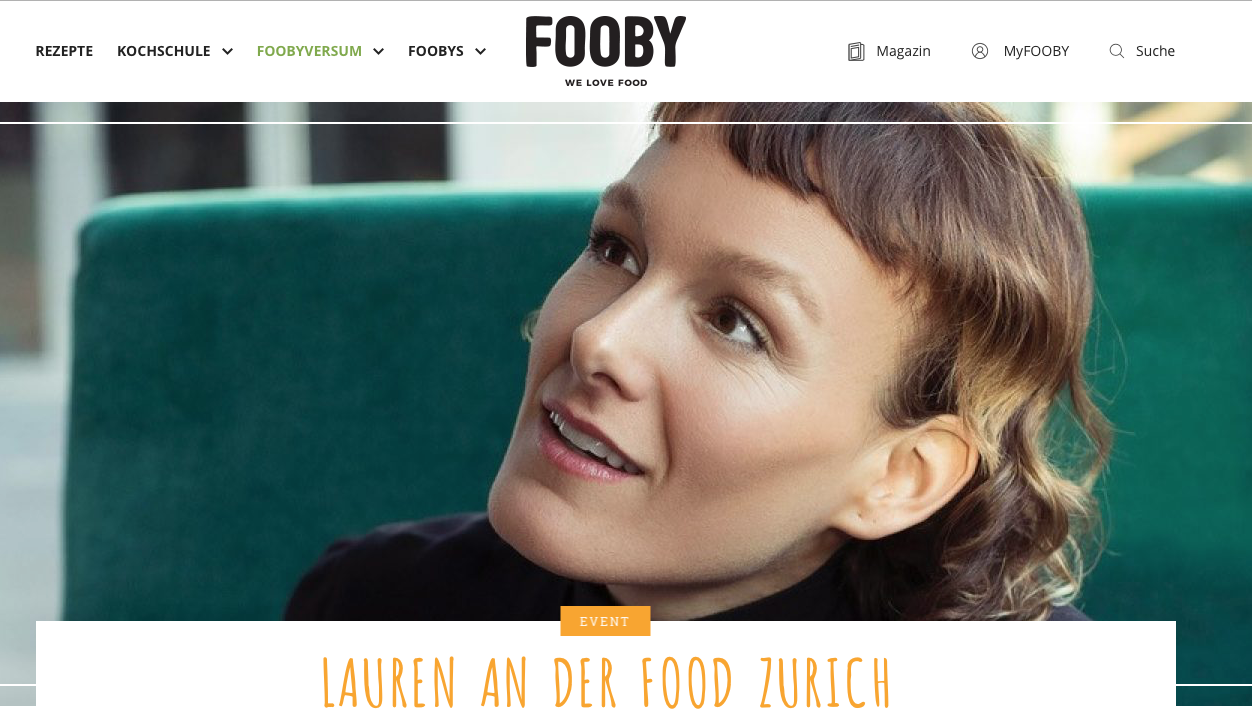
The final step from vegetarian to vegan
No other country in the world consumes more dairy products than the inhabitants of Switzerland. Many people who follow a vegetarian diet can hardly imagine life without cheese. That’s why they find it difficult to take the next step and give up animal products completely. New Roots now makes it easier for every connoisseur. Their vegan cheese, which is 100% handmade and organic, tastes great and is matured on a cashew nut base. Click here for the beautifully designed website with exciting details about the innovative production method and the philosophy of Alice and Freddy.
The black gang – Manifesto by Good food for you
It is an essential ethical ingredient of our new, gastrosophic cuisine that we would like to emphasize: Art in the form of an exploratory process that addresses questions about cooking and artistic staging. Inspiration for this comes from the chefs of the Nordic Food Lab, who report on food making through philosophizing and critical self-reflection: “Why do we work with the ingredients we do, why do we choose to work with them in the ways we do, and are these decisions, taken together, a ‘cuisine’?” Making food and creating an ambience not only require skillful craftsmanship, but above all the willingness to combine science and subtlety, human intelligence and creativity.
We use the tools of emotionalization, for example with background music, because the sound whets the appetite. Thanks to neurogastronomic experiments, we are following a recommendation from Oxford University, which has investigated in several studies how sounds sensitize our taste buds.
We not only smell, see and taste the food, we also feel and hear it. Our enjoyment is multisensory. For example, dinner plates are chosen in different colors to sharpen the subjective perception through complementary contrasts. We promise auspicious color associations of the food. With this scientific knowledge and with the help of a self-developed gastronomy method, we realize an ethical and aesthetic temporary restaurant concept. We always think of the act of eating as an artistic medium. Our multi-course menu achieves an ethical cleansing.
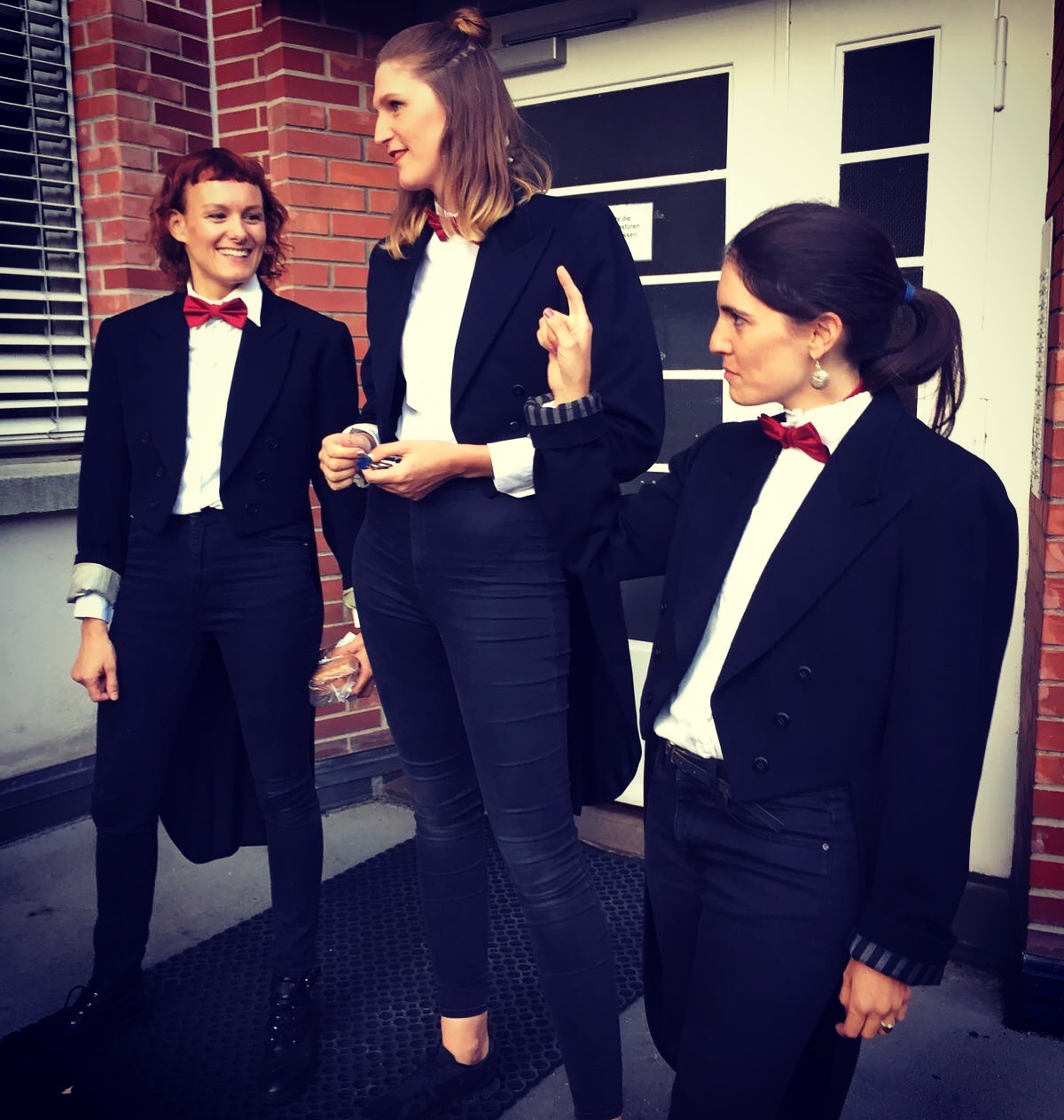 Picture: Part of the “Good food for you” collective.
Picture: Part of the “Good food for you” collective.
The gastroethical imperative is not that all fine cuisine must necessarily be vegan. Such a maxim of renunciation is neither realistic nor factually correct. Nevertheless, chefs, artists and scenographers in particular should rise to the artistic challenge and devote themselves to this topic.
“We cook and stage in temporary spaces and in combination with science, ethics and creativity.”
At Food Zurich for FOOBY
Dîner sur l’herbe
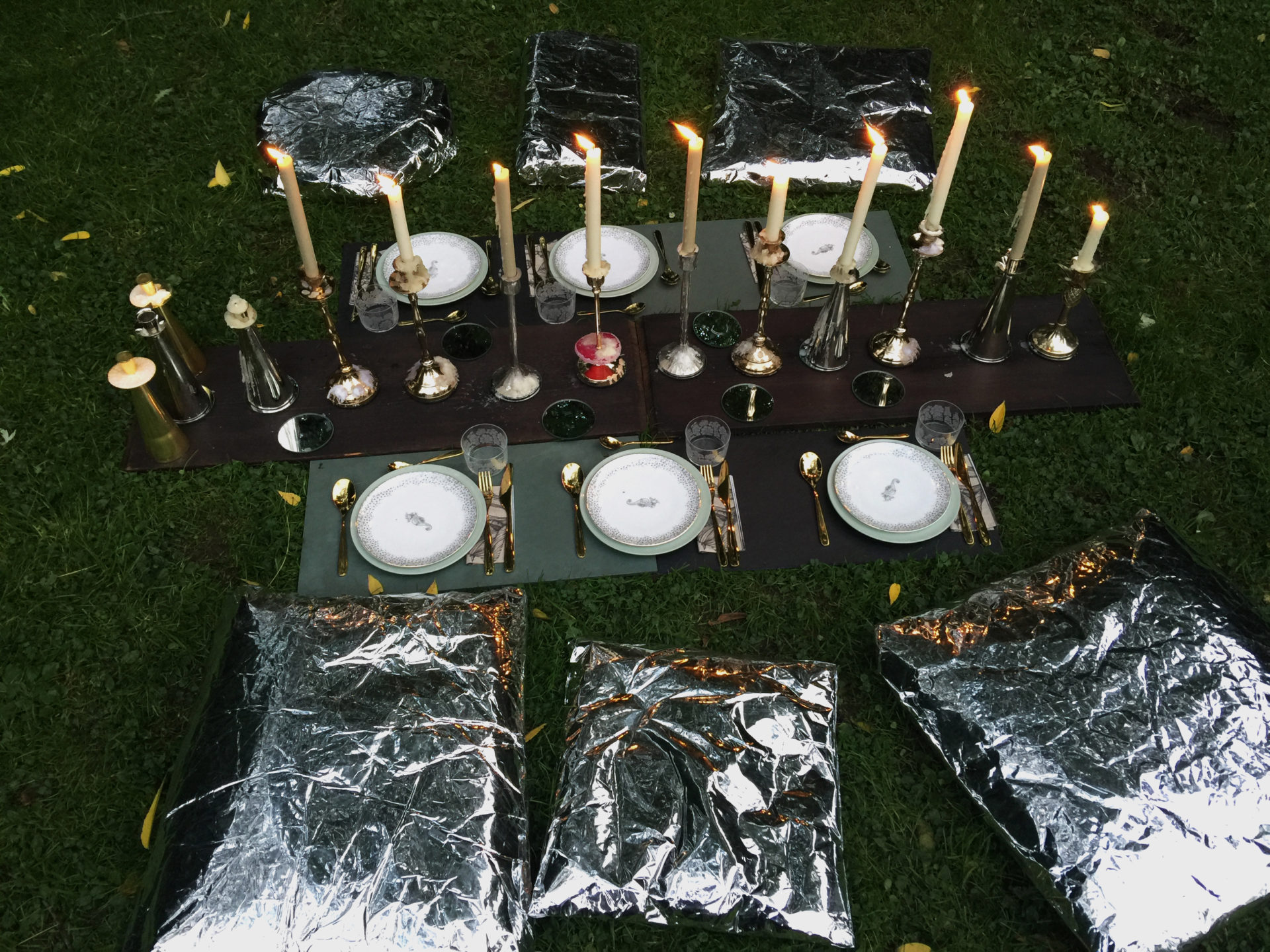
A restaurant for 6 guests without walls, dining on a lush green meadow, on one of the last summer days in Zurich this year.
I staged a multi-course dinner on a meadow in Rieterpark Zurich, set a small Japanese-style table and invited my friends to a multi-course “Diner sur l’herbe”. Outside in the open air, a magical atmosphere was created as the candles were lit and the first guests arrived. Everything else and what there was to eat remains in the realm of the imagination.

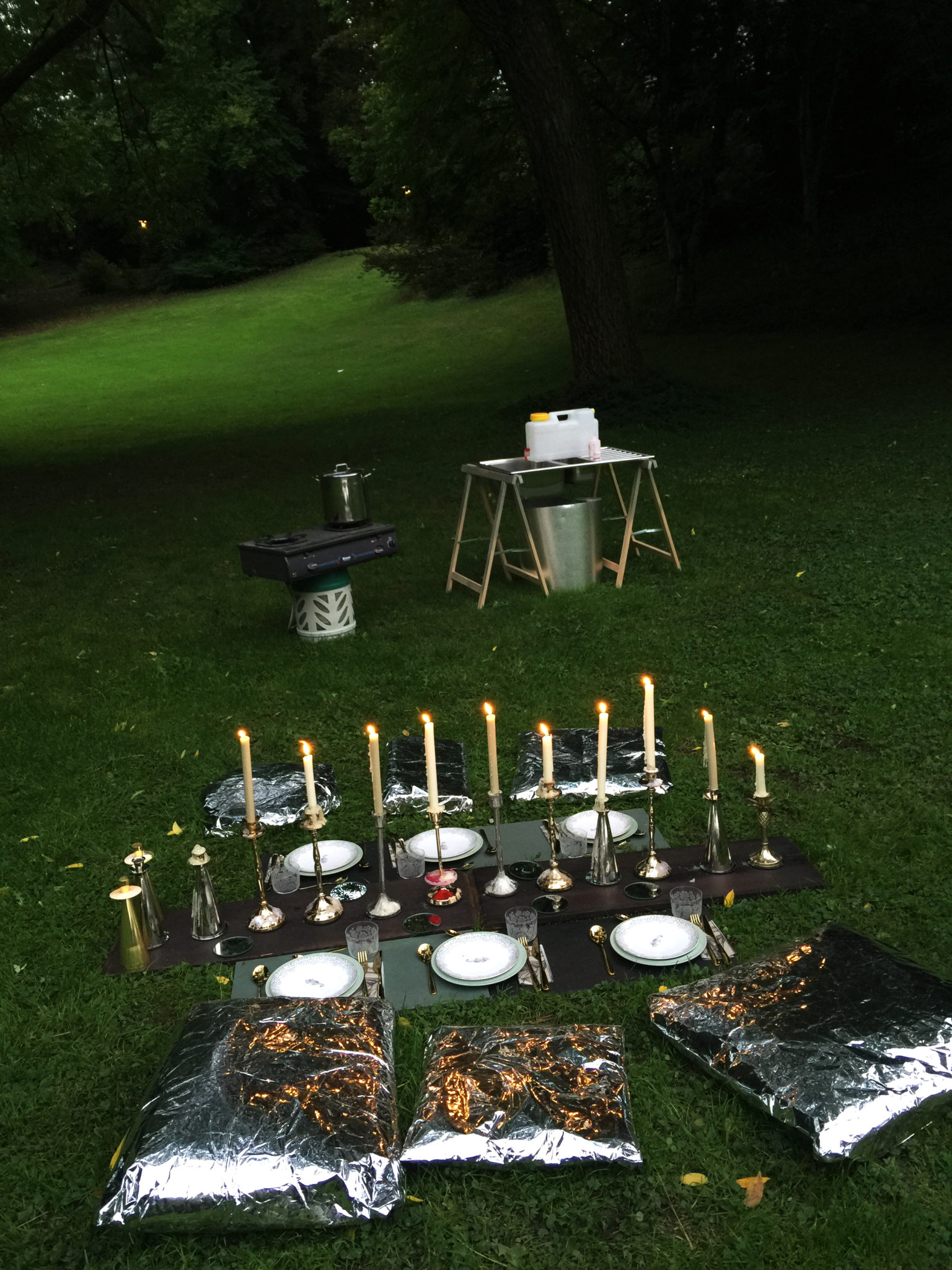

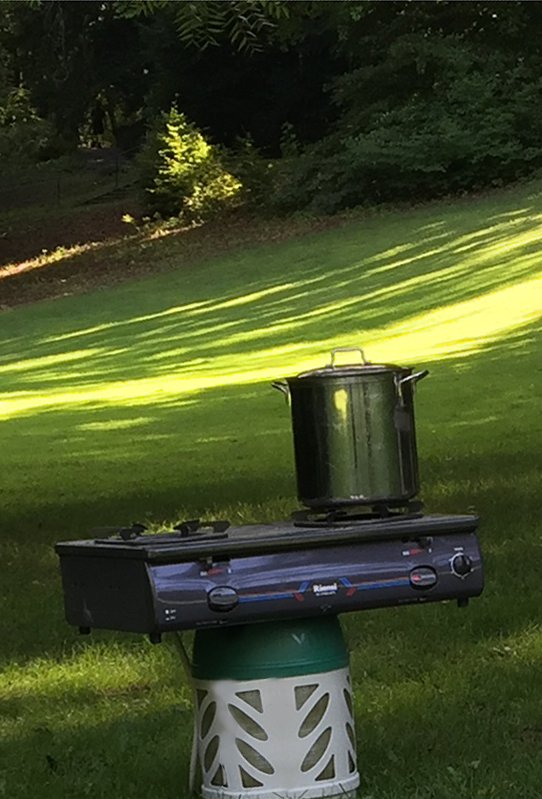
Gas stove from the New Asia Market in Zurich.
Built-in sink from IKEA.
Clean Food for Carnivores @ Food Zurich.
 See, smell, taste and hear new things. The art collective “Good Food for you for free”, namely artists Claudia Marolf, scenographer Helen Prates de Matos and cooking activist and vegan Lauren Wildbolz, have noble intentions: In one evening, restaurant visitors are catered for on all sensory levels. The focus is on confronting our usual eating habits and consciously breaking down familiar thought patterns. The result is a narrative spatial experience with a scientific embedding of smell, taste and tonality.
See, smell, taste and hear new things. The art collective “Good Food for you for free”, namely artists Claudia Marolf, scenographer Helen Prates de Matos and cooking activist and vegan Lauren Wildbolz, have noble intentions: In one evening, restaurant visitors are catered for on all sensory levels. The focus is on confronting our usual eating habits and consciously breaking down familiar thought patterns. The result is a narrative spatial experience with a scientific embedding of smell, taste and tonality.
Facts: Mon. 11.09.2017, 18:30 -22:30 Experimental, 6-course plant-based dinner for CHF 50 per person (excl. drinks).
Register for the dinner experiment at infogoodfoodforyou@gmail.com
Vegan soirée with Rike Schindler & Lauren Wildbolz

Vegan Soirée – Through the evening with Lauren Wildbolz & Rike Schindler.
Zurich chef activist Lauren Wildbolz meets Berlin chef Rike Schindler (NoTiers). As part of the Dinner Soirée series, we will be cooking for you with a one-course 6-course menu on August 24 in the Himmelreich (Loft) in the Supertanker in Binz Zurich.
Menu of the evening
1) Marinated summer vegetable triology with lemon and herbs from the garden
2) Raw lasagne with homemade V cream cheese and cedar seed parmesan
3) Fermented cucumber with iced pesto
4) Portobello mushroom burger with beetroot medallion on pea mash with fig jus and sour cherries
5) Three kinds of chocolate
6) Four kinds of fermented core cheese with roasted rosemary grapes
On this evening, Rike will tell us stories from Berlin and how she became a chef.
-> Reservations by e-mail are urgently required as places are limited in the Lofft on the roof of the Supertanker.
You can take part for 75.-CHF (food without drinks)
You will receive details of the payment method with your booking confirmation.
Please send your reservation request to info@vegankitchen.ch with the subject “Vegan Soirée with Rike”. Quite simple 🙂
We are looking forward to it!
Vegan Soirée with Rike Schindler & Lauren Wildbolz on August 24 /19:30 – 23:00 in the Himmelreich of the Supertankerat Binzstrasse 23, Zurich 8045
Okja is a must-see
Our new favorite feature film is now called Okja.
Okja is a feature film produced by Netflix that has also been released in cinemas in many countries around the world since May. The final version of Okja contains a brutal slaughterhouse scene that would probably never have been filmed like this in the hands of another production company. Without them, however, Okja would only be funny instead of upsetting, because filmmaker Bong Joon Ho patiently and with total poignancy shows the cruel nature of the mass production of animals. The film is not polemical, but that is precisely why Okja has a lasting effect, forcing everyone to reconsider where food comes from and what mechanisms advertising and PR use to cover up the truth.
You can watch Okja on netflix.com
And for anyone who has never purchased a Netflix subscription: the first month is free and can be easily canceled at any time.
Pêche Melba in a melon
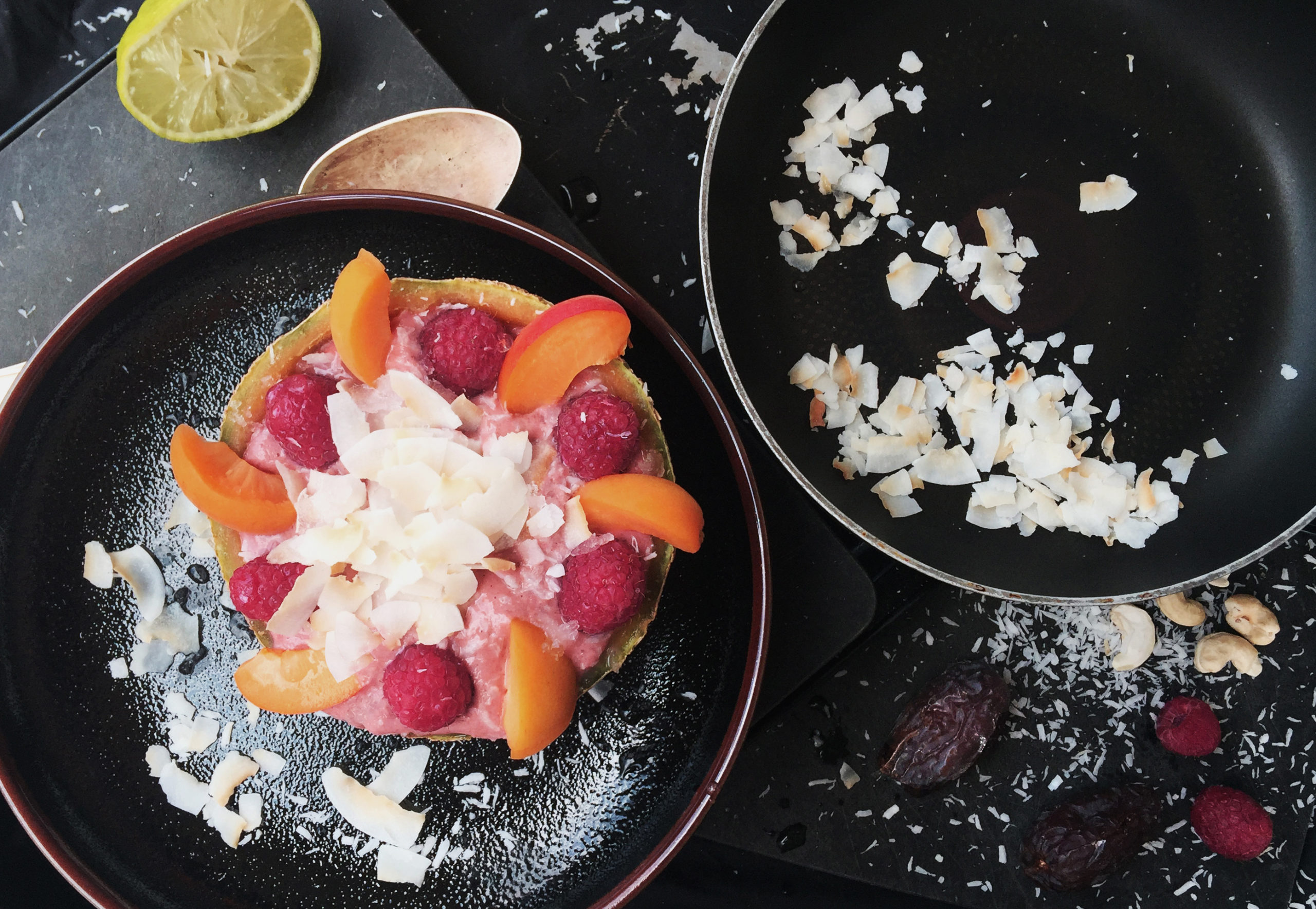 When the Australian prima donna Nellie Melba performed in Wagner’s opera “Lohengrin” at Covent Garden in London in 1892, Auguste Escoffier, the chef of the Savoy, was also in the audience. In short order, he created a dessert that he served her the next evening. He apparently knew about her preference for peaches. The first version was a dessert of peaches on a bed of vanilla ice cream arranged in a bowl, nestled between beautiful swan wings carved out of a block of ice. For this vegan version, I decided to mix a melon into the pêche melba and use the melon rind as a frozen bowl. The vanilla glacé effect comes from the creamy cashews and bourbon vanilla and is mixed together with the pêche melba in this recipe. Have fun with healthy “spooning”.
When the Australian prima donna Nellie Melba performed in Wagner’s opera “Lohengrin” at Covent Garden in London in 1892, Auguste Escoffier, the chef of the Savoy, was also in the audience. In short order, he created a dessert that he served her the next evening. He apparently knew about her preference for peaches. The first version was a dessert of peaches on a bed of vanilla ice cream arranged in a bowl, nestled between beautiful swan wings carved out of a block of ice. For this vegan version, I decided to mix a melon into the pêche melba and use the melon rind as a frozen bowl. The vanilla glacé effect comes from the creamy cashews and bourbon vanilla and is mixed together with the pêche melba in this recipe. Have fun with healthy “spooning”.
Recipe (2 portions)
Ingredients
1 Galia melon, halved
1 handful of raspberries, frozen
1 peach
1 handful of cashew nuts
1 tsp bourbon vanilla seeds, dried
Topping
approx. 12 raspberries, fresh
1 peach, fresh
Coconut chips
Grated coconut
Preparation
Scoop out the two halves of the melon using a soup spoon. Put the flesh in a freezer bag and place in the freezer compartment for 2 hours, freeze the hollowed-out shells as well.Now wash and pit the peach and cut into slices and place these in a freezer bag as well and freeze for 2 hours.Meanwhile, fry the coconut chips in a frying pan until golden brown.When everything is frozen, place the melon, peach and frozen raspberries in a high-powered blender.
Add the cashew nuts and vanilla and blend to a homogeneous smoothie ice cream, pour immediately into the two frozen melon bowls and decorate with the fresh raspberries, peach and grated coconut and coconut chips.
Alex is cooking @ July 7th & 8th
Join Alex and her crew for a long table pop-up dinner in an industrial warehouse in Zurich. Due to the special location, space will be limited!
Two dates to keep in mind, Friday 7th and Saturday 8th July. The 5 course tasting menu will be entirely plant-based and will feature locally grown and organic ingredients. The main concept of this pop-up is to introduce you to a different gastronomic experience that she hope will be as inspiring to you as it was for Alex. She will be partnering with amazing people that she can’t wait to introduce you to.
Alexiscooking is actually her Instagram account where it all started. You can follow her adventures there and see what up to the last few months. alexiscooking
LOCATION
Circle 2 in Zurich.
TWO DAYS AVAILABLE
Friday 7th & Saturday 8th July 2017, at 7pm.
COST
CHF 85 for the 5 course tasting menu and a few more surprises. The payment will be done in advance via TWINT/PAYMIT. Wines and drinks will be charged on consumption at the event.
If you want to book, please use the “Going” button in Facebook or email her the date you want to join, your name and phone number at hello@eatbyalex.com. She will confirm your spot with further details about the location.
And invite your friends to that next upcoming plant-based event, please!





